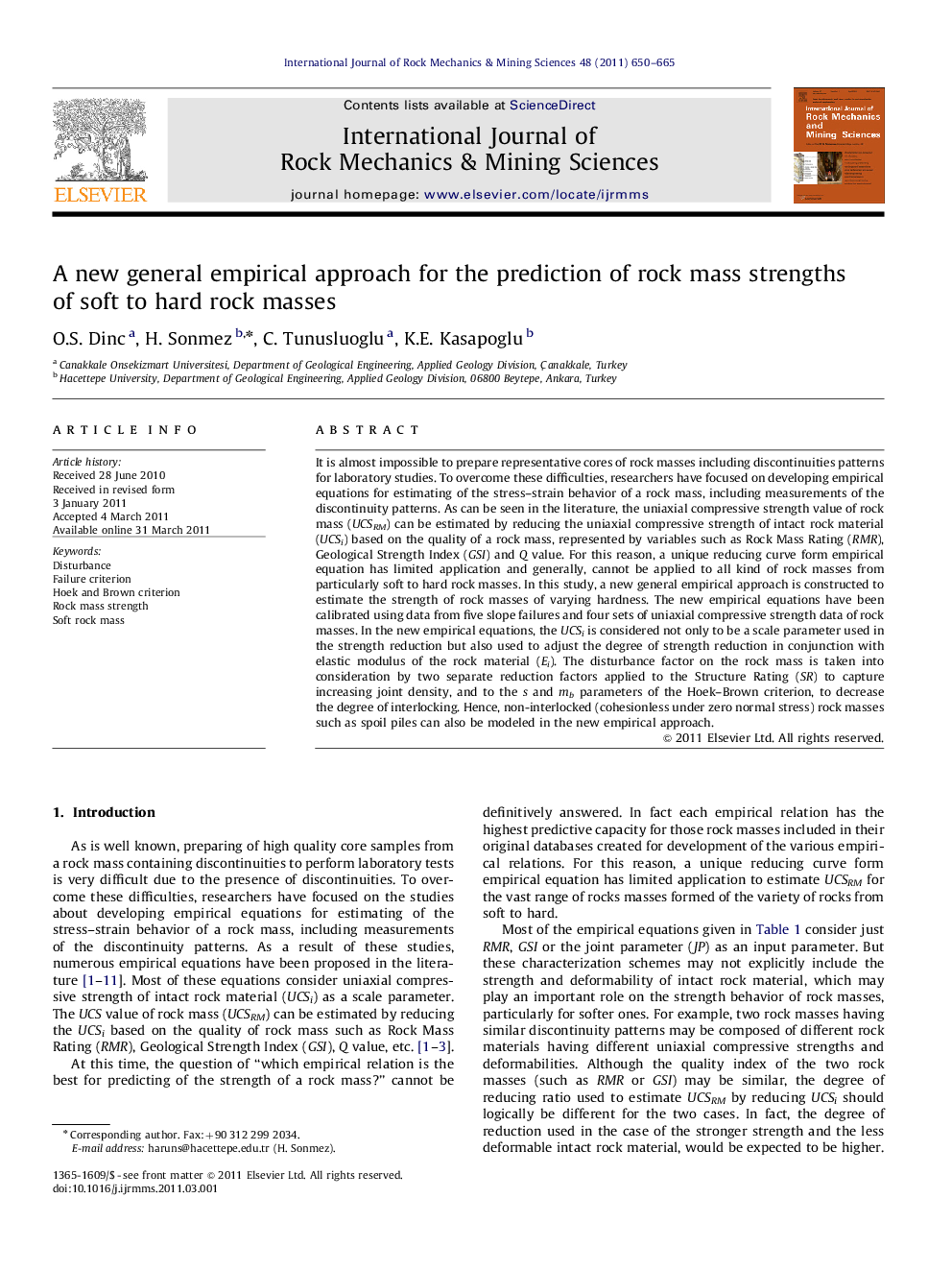| کد مقاله | کد نشریه | سال انتشار | مقاله انگلیسی | نسخه تمام متن |
|---|---|---|---|---|
| 809818 | 1468725 | 2011 | 16 صفحه PDF | دانلود رایگان |

It is almost impossible to prepare representative cores of rock masses including discontinuities patterns for laboratory studies. To overcome these difficulties, researchers have focused on developing empirical equations for estimating of the stress–strain behavior of a rock mass, including measurements of the discontinuity patterns. As can be seen in the literature, the uniaxial compressive strength value of rock mass (UCSRM) can be estimated by reducing the uniaxial compressive strength of intact rock material (UCSi) based on the quality of a rock mass, represented by variables such as Rock Mass Rating (RMR), Geological Strength Index (GSI) and Q value. For this reason, a unique reducing curve form empirical equation has limited application and generally, cannot be applied to all kind of rock masses from particularly soft to hard rock masses. In this study, a new general empirical approach is constructed to estimate the strength of rock masses of varying hardness. The new empirical equations have been calibrated using data from five slope failures and four sets of uniaxial compressive strength data of rock masses. In the new empirical equations, the UCSi is considered not only to be a scale parameter used in the strength reduction but also used to adjust the degree of strength reduction in conjunction with elastic modulus of the rock material (Ei). The disturbance factor on the rock mass is taken into consideration by two separate reduction factors applied to the Structure Rating (SR) to capture increasing joint density, and to the s and mb parameters of the Hoek–Brown criterion, to decrease the degree of interlocking. Hence, non-interlocked (cohesionless under zero normal stress) rock masses such as spoil piles can also be modeled in the new empirical approach.
Journal: International Journal of Rock Mechanics and Mining Sciences - Volume 48, Issue 4, June 2011, Pages 650–665